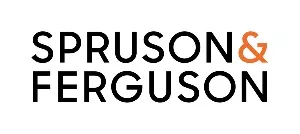Sexwax Incorporated v Zoggs International Limited [2014] NZCA 311
KEY ISSUE
Deceptively and confusingly similar trade marks – what is the market for assessing reputation?
FACTS
S coined the following logo trade mark in California around 1972:

The mark was not registered in NZ but was known there from around 1981 in connection with surf wax, t-shirts, beach wear and towels.
Z coined the ZOGGS trade mark in Australia around 1992 and had used it in NZ from around 1994 in relation to swimming goggles, and, later, in relation to swimwear.
In 2009, Z applied for ZOGGS as a trade mark in class 25 for clothing, swimwear and headgear.
S opposed the application under section 17(1)(a) of the New Zealand Trade Marks Act 2002 on the grounds that use of the trade mark would be likely to deceive or cause confusion.
The Assistant Commissioner of Trade Marks ruled in S' favour and refused registration.
Z appealed to the High Court.
HIGH COURT DECISION (NOTE: THE NZ COURT OF APPEAL IS A SUPERIOR COURT TO THE NZ HIGH COURT)
The High Court allowed Z's appeal finding that the marks were "quite dissimilar" with the "sex wax" element of S' trade mark being the "attention grabbing" element and "Mr Zogs" being a less prominent element.
The High Court also ruled that S had failed to establish the necessary reputation in the individual elements of its mark in NZ even if it could establish a sufficient reputation in the mark as a whole. The judge did not accept that S' reputation in the individual elements overseas had "spilled over" into NZ. Establishing the necessary reputation was a precondition for establishing the required level of confusion or deception. The relevant market was the general purchasing public and retailers involved in the clothing industry – being the applicant's target market.
S appealed to the Court of Appeal.
COURT OF APPEAL DECISION AND REASONING
The Court upheld S' appeal and refused registration of Z's mark. S 17(1) involves an assessment firstly of whether the owner of the mark can establish the necessary reputation in the relevant market, followed by a fact-specific determination of the likelihood of deception or confusion in consideration of that reputation.
Reputation is determined by reference to awareness of the mark amongst buyers of the opponent's goods rather than buyers of the applicant's goods. The High Court erred by merging the analysis of reputation and likelihood of deception/confusion into one test determined by reference to the general purchasing public.
S was found to have a sufficient reputation in the surf wax and surfing merchandise market. While different from the swimwear market, the surf merchandise market was connected to it such that a substantial number of people familiar with S' mark may encounter Z's mark and be deceived or confused by it.
It was unnecessary for S to establish a separate reputation in the "Mr Zogs" element of its logo, and in any event that element was a central and essential part of the logo. This element would "cause consumers to wonder" if there was a connection between S and the ZOGGS trade mark. S produced evidence that consumers referred to its products as "Mr Zogs".
Once the necessary reputation was established, the onus (burden of proof) then fell to Z to demonstrate that a substantial number of persons would not be confused or deceived. Z failed to establish this.
The application was refused but the Court suggested that Z could file a further application for specific goods which did not overlap so much with the surf sector market in which S had such a strong reputation.
KEY LESSONS
Unregistered marks can be used to block applications if the necessary reputation in NZ is established.
A mark which contains only some elements of a more complex mark can still be problematic if those elements are sufficiently important/prominent.
Reputation is determined by reference to the opponent's market, not the applicant's market.
Likelihood of deception or confusion is determined by reference to the proportion of consumers from the opponent's market who may be exposed to the applicant's products (and of course, the degree of similarity between the marks).
The content of this article is intended to provide a general guide to the subject matter. Specialist advice should be sought about your specific circumstances.

